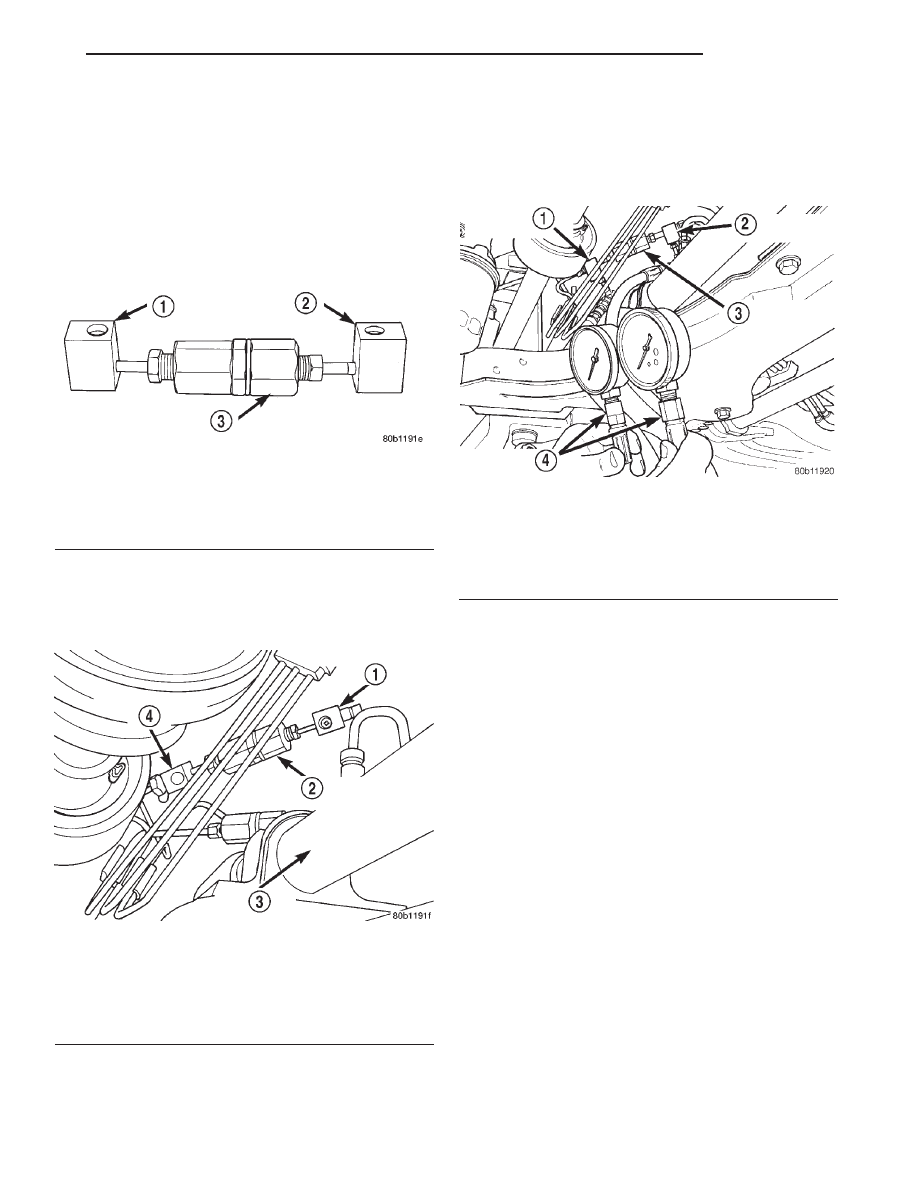Chrysler Stratus Convertible. Manual - part 188

CAUTION: Be sure the pressure test fittings being
installed into proportioning valve, have the correct
thread sizes for installation into the proportioning
valve and installation of rear brake line tube nut.
(4) Install Pressure Test Fitting, Special Tool 8187
in the inlet port of the proportioning valve (Fig. 22).
Install Pressure Test Fitting, Special Tool 8187–2 in
the outlet port of the proportioning valve (Fig. 22).
Tighten tube nuts to a torque of 17 N·m (145 in. lbs.)
(5) Install the proportioning valve with the pres-
sure test fittings installed, in the chassis brake tube
(Fig. 23). Tighten both tube nuts to a torque of 17
N·m (145 in. lbs.).
(6) Install
a
Pressure
Gauge,
Special
Tool
C-4007-A into each pressure test fitting (Fig. 24).
Bleed air out of hose from pressure test fitting to
pressure gauge, at pressure gauge to remove all
trapped air. hose.
(7) With the aid of a helper, apply pressure to the
brake pedal until reading on proportioning valve
inlet gauge, is at the pressure shown on the following
chart, PROPORTIONING VALVE APPLICATIONS
AND PRESSURE SPECIFICATIONS. Then check
the pressure reading on the proportioning valve out-
let gauge. If proportioning valve outlet pressure does
not agree with value shown on the following chart,
when inlet pressure shown on chart is obtained,
replace the proportioning valve. If proportioning
valve is within pressure specifications do not replace
proportioning valve.
(8) Check rear wheel brake shoe linings for con-
tamination or for replacement brake shoes not meet-
ing OEM brake lining material specifications. These
conditions can also be a possible cause for a prema-
ture rear wheel skid.
(9) Install proportioning valve in rear brake line
and hand tighten both tube nuts until they are fully
seated in proportioning valve.
(10) Tighten both brake line tube nuts at the pro-
portioning valve to a torque of 17 N·m (145 in. lbs.).
(11) Bleed the affected brake line. Refer to BASE
BRAKE
BLEEDING
in
the
SERVICE
PROCE-
DURES section.
Fig. 22 Pressure Test Fitting Installed In
Proportioning Valve
1 – SPECIAL TOOL 8187
2 – SPECIAL TOOL 8187–2
3 – PROPORTIONING VALVE
Fig. 23 Proportioning Valve With Pressure Test
Fittings Installed
1 – SPECIAL TOOL 8187–2
2 – PROPORTIONING VALVE
3 – STEERING GEAR
4 – SPECIAL TOOL 8187
Fig. 24 Pressure Gauges Installed On Pressure Test
Fittings
1 – PRESSURE TEST FITTING
2 – PRESSURE TEST FITTING
3 – PROPORTIONING VALVE
4 – SPECIAL TOOL C-4007–A
JX
BRAKES
5 - 15
DIAGNOSIS AND TESTING (Continued)